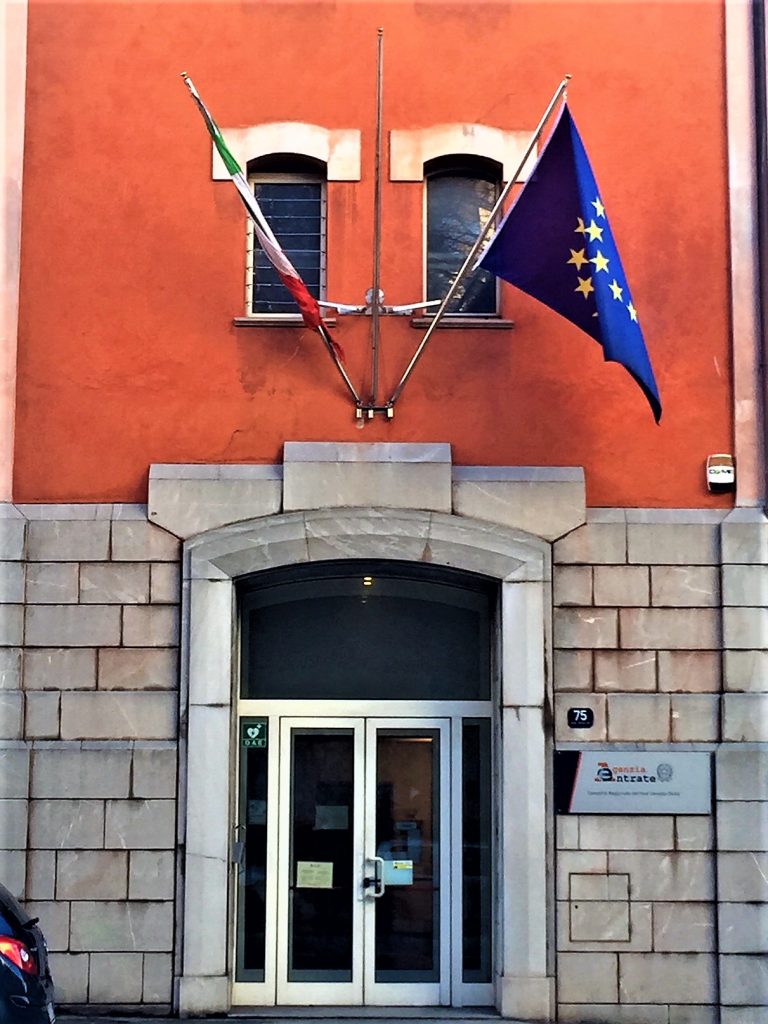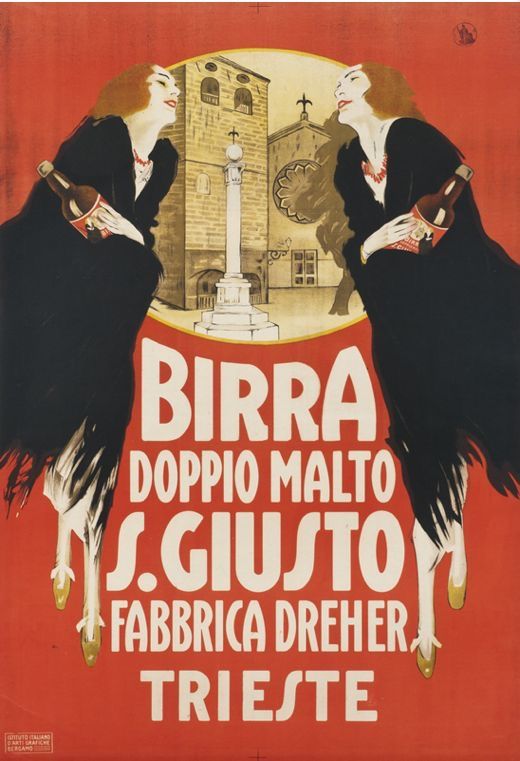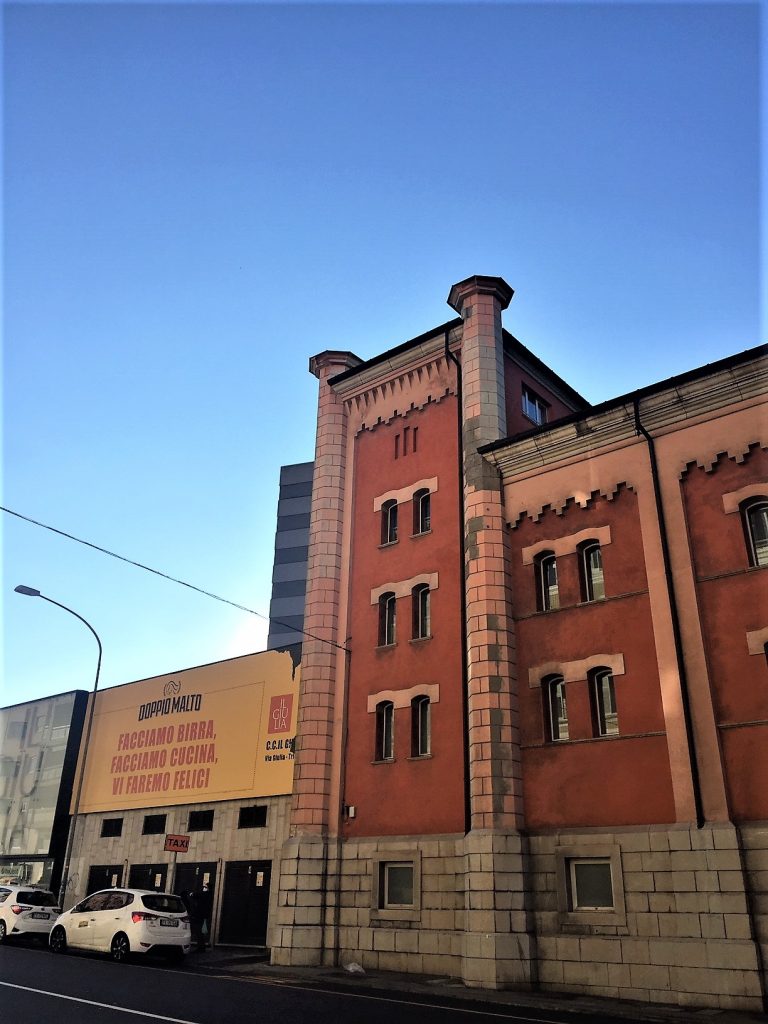by Alessandra Ressa
On Via Giulia 75, the imposing orange palace catches the eye. Its castle-like façade is a rare example of architectural majesty in a sea of modern monotony. But this building, now home to the much-dreaded Agenzia delle Entrate—Italy’s tax authority—tells a story far richer than its current purpose suggests.
This structure, steeped in history, is all that remains of the once-mighty Dreher beer factory, a cornerstone of Trieste’s industrial prosperity. Founded in the late 19th century, Dreher was not only a symbol of local economic power but also a model of urban industrial integration. Its sprawling grounds, carefully designed to blend with the surrounding cityscape, reflected an era when industrial architecture still honored beauty and function in equal measure.

The Dreher family had been in the beer business in Vienna for generations, from as early as the 16th century, according to historians. When the business started to boom three hundred years later, they began to consider expanding in the second largest city of the Austro-Hungarian empire, Trieste.
Meanwhile, at the beginning of the 1800s, Trieste was growing quickly thanks to its port and the large investments in infrastructures promoted by Austrian rulers Karl VI, and later by Maria Theresa. Businesses were sprouting everywhere. Innovative ideas always found financial support from banks and insurance companies, the economy was rapidly growing, attracting workers from all over the Empire.
The idea of setting up the first beer factory in town was introduced by Prague-born Carl Voelkner, a penniless but resourceful young entrepreneur. His charm and enthusiasm soon attracted the support of some of the wealthiest and most influential men in town, who decided to finance his pioneering project.
Among them were Franz Ringhoffer, Franz Gossleth (who contributed to the construction of Miramare Castle), Elio de Morpurgo (director of Austrian Lloyd, later to become Lloyd Triestino), Michele Sartorio (one of the founders of soon to be born Assicurazioni Generali and R. A. S.), Baron Erman de Lutteroth (one of the founders of R.A.S., whose magnificent headquarters today accommodate Double Tree by Hilton hotel in Piazza della Repubblica), and, among many other prominent names, Baron Pasquale Revoltella.

In 1865, these influential and powerful men, with the financial support of the Viennese Rothschild bank, founded in Trieste “Prima Società per la Fabbrica di Birra”. The construction of the factory soon followed over an area previously used by a tannery.
The abundant streams flowing in the area made it an ideal location. Over a thousand workers were employed. Expectations, however, were not fulfilled. Immediately after the production began, the company suffered heavy capital losses. The factory was soon sold to Austrian beer tycoon Anton Dreher, who proceeded to expand and modernize it. In no time the golden, foamy drink conquered the Adriatic and business profits skyrocketed.

The Dreher beer hall was a very popular place for Triestini. Built after WWI inside the factory, its vaulted ceilings and Mitteleuropean atmosphere were a sure attraction for decades to come. People lined up to enjoy its illustrious beer from a traditional stiefel, the 1-liter jug shaped like a boot.
For 5 liras you could dine with the specialty of the house, the Dreher plate, generous in cold cuts, sausages and sauerkrauts. The beginning of the Great War paralyzed the production, and the economic crisis hit hard. In 1929 the factory was sold to the Luciani family, owner of popular Pedavena beer, making Dreher the most well-known and exported Italian lager.

In 1945 the main building suffered heavy damages due to war. At the end of the 1960s the factory began its final decline and was permanently closed in 1976. Two years earlier beer colossus Heineken had bought out the company. The factory took up the whole block, from Rotonda del Boschetto to via Pindemonte and down to via dei Bonomo along via Giulia in an area then known as “borgo Franceschino”.

Out of the massive industrial settlement only the main building remains today, surrounded by tall, apartment buildings and parking lots. The Dreher settlement was an example of industrial grounds built to be integrated in the city suburbs with dutiful respect to architectural decorum. The factory was demolished in 1986 to make room for unattractive private housing and commercial businesses, including the first shopping mall in Trieste – Il Giulia, which opened its doors in 1991. Where once stood the popular Dreher beer hall, today stands a semi-deserted sports store in a similarly semi-deserted commercial area.

If only the historical buildings of the factory had been preserved and converted into the much longed for shopping mall (and maybe a museum), it would have been a unique historical attraction and economic resource.






























Wondering how and if you acquired IT citizenship? My last name is Dreher and am contemplating dual citizenship. Could you please DM through my email, please?